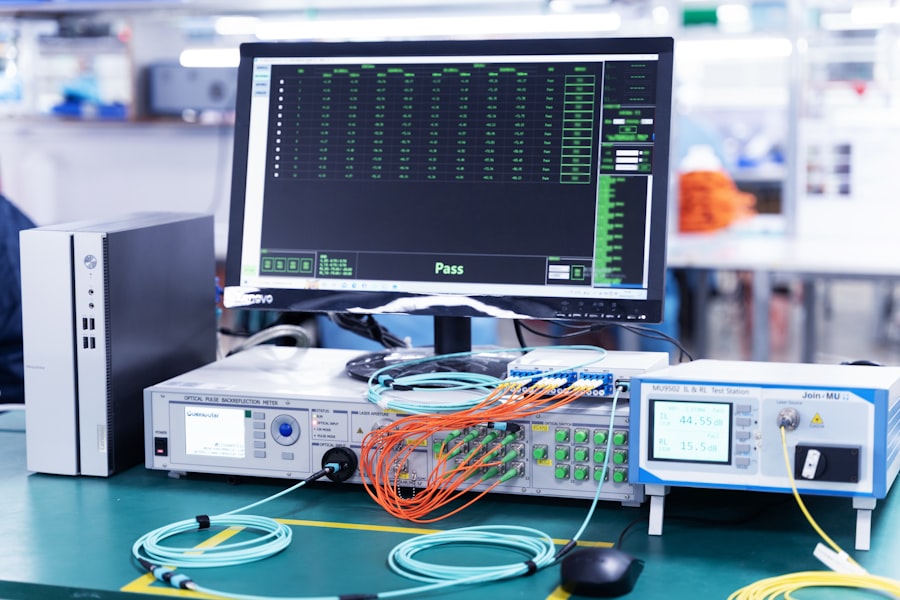Electronic Data Capture (EDC) systems have revolutionized the way clinical trials are conducted, providing a digital framework for collecting, managing, and analyzing data. At their core, EDC systems are designed to replace traditional paper-based data collection methods, which are often cumbersome and prone to errors. By utilizing electronic platforms, researchers can streamline the data entry process, reduce the risk of data loss, and enhance the overall efficiency of clinical trials.
EDC systems facilitate the collection of data directly from clinical sites, allowing for real-time access and monitoring by study sponsors and regulatory bodies. The architecture of EDC systems typically includes a user-friendly interface that allows clinical trial staff to input data easily. These systems often feature built-in validation checks to ensure that the data entered meets predefined criteria, thereby minimizing errors at the source.
Additionally, EDC systems can be customized to accommodate the specific needs of different studies, including various data types and formats. This flexibility is crucial in a field where protocols can vary significantly from one trial to another. As a result, EDC systems not only enhance data integrity but also support compliance with regulatory requirements, making them an essential tool in modern clinical research.
Key Takeaways
- EDC systems simplify and improve data collection and management in clinical trials.
- Real-time monitoring through EDC enhances trial oversight and decision-making.
- Integration with electronic health records streamlines data flow and reduces errors.
- EDC systems boost data quality, accuracy, and overall workflow efficiency.
- Successful EDC implementation requires addressing challenges and following best practices.
Implementing EDC Systems in Clinical Trials
The implementation of EDC systems in clinical trials involves several critical steps that require careful planning and execution. Initially, stakeholders must assess their specific needs and objectives to select an appropriate EDC solution. This process often includes evaluating various vendors and their offerings, considering factors such as system capabilities, user experience, and cost.
Once a system is chosen, a comprehensive implementation plan must be developed, which includes timelines, resource allocation, and training for all personnel involved in the trial. Training is particularly vital during the implementation phase, as it ensures that all users are proficient in navigating the EDC system and understand its functionalities. This may involve hands-on workshops, online tutorials, or one-on-one sessions with system experts.
Furthermore, establishing a clear communication channel among team members can facilitate troubleshooting and foster collaboration throughout the trial. As the study progresses, continuous monitoring and feedback mechanisms should be put in place to identify any issues with the EDC system and address them promptly. This proactive approach not only enhances user satisfaction but also contributes to the overall success of the clinical trial.
Streamlining Data Collection and Management

One of the primary advantages of EDC systems is their ability to streamline data collection and management processes. Traditional methods often involve multiple steps, including manual data entry, transcription from paper forms, and extensive quality checks. In contrast, EDC systems allow for direct data entry at the source, significantly reducing the time and effort required to collect information.
This efficiency is particularly beneficial in multicenter trials where data must be aggregated from various locations. Moreover, EDC systems often incorporate features such as automated data validation and real-time error detection. These functionalities help ensure that data is accurate and complete before it is submitted for analysis.
For instance, if a user attempts to enter a value outside of an acceptable range, the system can flag this discrepancy immediately, prompting the user to correct it on the spot. This immediate feedback loop not only enhances data quality but also minimizes delays associated with post-collection data cleaning processes. By streamlining these workflows, EDC systems enable researchers to focus more on analysis and interpretation rather than on tedious data management tasks.
Utilizing EDC Systems for Real-Time Monitoring
| Metric | Description | Typical Value | Benefit |
|---|---|---|---|
| Data Entry Latency | Time delay between data capture and entry into the EDC system | Less than 5 minutes | Enables near real-time data availability for monitoring |
| Query Resolution Time | Average time to resolve data queries generated by the system | 24-48 hours | Improves data quality and integrity promptly |
| Data Completeness Rate | Percentage of expected data fields completed in real-time | 95% or higher | Ensures comprehensive data capture for analysis |
| System Uptime | Percentage of time the EDC system is operational and accessible | 99.9% | Supports continuous monitoring without interruptions |
| Real-Time Alerts Generated | Number of alerts triggered for data anomalies or protocol deviations | Varies by study size | Facilitates immediate corrective actions |
| User Access Time | Time taken for authorized users to access real-time data dashboards | Instant to 1 minute | Enables timely decision-making and oversight |
Real-time monitoring is another significant benefit offered by EDC systems in clinical trials. With traditional paper-based methods, monitoring data often involves time-consuming processes that can delay decision-making. In contrast, EDC systems provide instant access to up-to-date information from all participating sites.
This capability allows sponsors and regulatory authorities to track patient enrollment, adverse events, and other critical metrics as they occur. For example, if a particular site is experiencing delays in patient recruitment or reporting adverse events, study monitors can quickly identify these issues through the EDC system’s dashboard. This immediate visibility enables timely interventions to address any challenges that may arise during the trial.
Additionally, real-time monitoring supports compliance with regulatory requirements by ensuring that all necessary data is collected and reported promptly. The ability to access live data not only enhances oversight but also fosters transparency among stakeholders involved in the clinical trial process.
Integrating EDC Systems with Electronic Health Records
The integration of EDC systems with Electronic Health Records (EHR) represents a significant advancement in clinical research methodologies. By linking these two systems, researchers can leverage existing patient data to enhance their studies while minimizing redundancy in data collection efforts. This integration allows for seamless data transfer between clinical practice and research environments, facilitating a more comprehensive understanding of patient outcomes.
For instance, when a patient enrolled in a clinical trial has their health information updated in an EHR system, this information can be automatically reflected in the corresponding EDC system. This not only reduces the burden on clinical staff who would otherwise need to enter this information manually but also ensures that researchers have access to the most current patient data available. Furthermore, integrating EDC systems with EHRs can enhance patient safety by allowing researchers to monitor real-world outcomes and adverse events more effectively.
This holistic approach to data management ultimately leads to more robust findings and improved patient care.
Enhancing Data Quality and Accuracy with EDC Systems

Data quality and accuracy are paramount in clinical trials, as they directly impact the validity of study results. EDC systems are designed with various features that enhance these critical aspects of data management. One key feature is the implementation of standardized data entry formats and controlled vocabularies, which help ensure consistency across different sites and personnel involved in the trial.
By standardizing how data is collected and reported, researchers can minimize variability that could skew results. Additionally, many EDC systems incorporate advanced analytics tools that allow for ongoing assessment of data quality throughout the trial. These tools can identify trends or anomalies in the data that may indicate potential issues with data collection or reporting practices.
For example, if a particular site consistently reports higher rates of adverse events compared to others, this could prompt further investigation into their reporting practices or patient population. By proactively addressing these concerns, researchers can maintain high standards of data integrity and ensure that their findings are both reliable and credible.
Optimizing Workflow and Productivity with EDC Systems
The optimization of workflow and productivity is another significant benefit associated with the use of EDC systems in clinical trials. By automating various aspects of data collection and management, these systems free up valuable time for clinical staff to focus on other essential tasks related to patient care and study oversight. For instance, automated reminders for follow-up visits or assessments can help ensure that patients remain engaged in the trial without requiring constant manual intervention from staff.
Moreover, EDC systems often provide tools for project management that allow teams to track progress against study milestones effectively. These tools can include dashboards that visualize key performance indicators (KPIs), such as patient enrollment rates or data query resolution times. By having access to this information at their fingertips, study teams can make informed decisions about resource allocation and prioritize tasks that require immediate attention.
This level of organization not only enhances productivity but also contributes to a more efficient overall trial process.
Overcoming Challenges and Best Practices for EDC System Implementation
Despite the numerous advantages offered by EDC systems, challenges can arise during their implementation in clinical trials. One common hurdle is resistance to change among staff accustomed to traditional paper-based methods. To overcome this challenge, it is essential to foster a culture of innovation within the organization by emphasizing the benefits of EDC systems for both staff and patients alike.
Engaging team members early in the process through training sessions and open discussions can help alleviate concerns and encourage buy-in. Another challenge involves ensuring compliance with regulatory standards throughout the implementation process. Best practices for addressing this issue include conducting thorough validation testing of the EDC system before it goes live and maintaining detailed documentation of all processes related to data management.
Regular audits should also be performed during the trial to ensure ongoing compliance with regulatory requirements. By adhering to these best practices and remaining vigilant about potential challenges, organizations can successfully implement EDC systems that enhance their clinical trial operations while maintaining high standards of quality and integrity in their research efforts.




